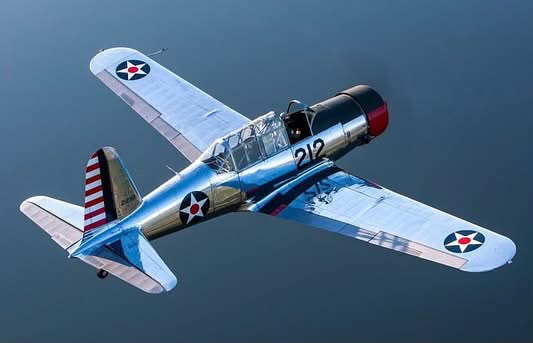Timber Tiger Ryan ST-L
- J.K. Caldwell
- Feb 23, 2022
- 3 min read

First Impressions: The stunning beauty and elegant lines of this 95% scale Ryan ST replica quickens the pulse and takes you back to the “golden age” of aviation.
Background: First, this is not a PT-22 replica! Many assume this is a replica of the WWII trainer because of the design similarities and military paint scheme. The differences, however, are too many to write a fair comparison. It is a replica of the earliest Ryan design, the ST (Sport Trainer), introduced in 1934. Timber Tiger is a new kit-build aircraft company located in Montrose, Colorado; the ST-L, their first design, made its debut at Oshkosh 2021. Of note, the build time for the kit is approximately 1500 hours. The aircraft I flew is the factory demonstrator, currently located at Shiflet Field (9A9), a cool little grass runway tucked away in the Smokey Mountains of NC.

Design Features: This low-wing monoplane incorporates flying and landing brace wires and uses a torque-link landing gear that actually improves centerline tracking from the original Ryan leading-link Treadle landing gear. Because there is no round engine up front, the fuselage is more streamlined, with significantly lower drag compared to its distant cousin, the PT-22 Recruit.
Powerplant: Timber Tiger’s lead engineer looked at a variety of Powerplant options and settled on the known quantity of the Rotax 912 ULS for its demonstrator. It delivers 100 horsepower to the wood prop from Performance Propellers. The reason four exhaust stacks protrude from the cowling is that the aircraft was designed to replicate the original Menasco inverted, four-cylinder in-line engine that graced the original Ryan Aeronautical Company’s ST. Only the two middle exhaust stacks are functional. Timber Tiger’s Powerplant options include the Gen 4 Jabiru 3300 (120hp), Verner 7U (125hp radial), D-Motor LF-39 (125hp) and Rotec R2800 (110hp radial).

Ergonomics: I classify the prototype I flew as a 1.5 seater. The pilot sits in the aft seat, which has ample leg and sitting room for someone perhaps as tall as 6’2” if the normal seat cushion is swapped for a thinner but less-comfortable cushion. The windscreens are small curved plexiglass so if the pilot or passenger have a tall sitting height, the airstream may catch the top of their cloth or leather helmet. The passenger seat (forward) is tight! Getting in requires you to think thin and slide in. Once in, the passenger will have to bow their legs around the header fuel tank to reach the rudder pedals. The dashboard/instrument panel is about 8 inches in front of the passenger’s face, and the pilot’s feet tend to rub the passenger’s hips as the rudder pedals are manipulated. Someone smaller than my 6’ medium-sized frame will have less issues obviously. Stick, throttle and rudder pedals (no brakes) are located in the front seat, but no engine or flight instruments are in the factory demonstrator. The front seat throttle, though in an awkward position due to fuselage bulkheads, is manageable if needed. Front seat takeoffs and landings are possible for pilots proficient in “feeling” an aircraft’s energy state, but assistance from the pilot in back is needed taxiing the ST-L once on deck. That being said, follow-on improvements include an extra four inches of front cockpit space, front seat brakes, taller windscreens, a heavy-duty rollover post, and wing tanks to improve front seat legroom and give greater fuel capacity.

Preflight: There is no quick access door for “burping” and checking the oil level in the Rotax, so the cowling must be removed to accomplish a proper preflight. This is obviously the builder’s prerogative, so even though it would slightly detract from the clean cowling lines, the convenience would be worth it. The rest of the preflight is straight forward. If the front cockpit is unoccupied, be sure to buckle and tighten all loose seat belt straps.
Flight Characteristics: This airplane has no bad habits. The straight wings are the same design as a Kitfox IV, so the aircraft has no tendency to drop off in a stall. The roll rate is as it should be and the visibility is magnificent! It is difficult not to enjoy a flight in an open-cockpit Ryan, especially on a warm day!

Landing: A constant turn from abeam the landing point or a forward slip to land are both good methods to keep the landing area in sight and the flight path clear. Capture 60 knots on final and smoothly flare for an easy three point landing. A wheel landing is another option to maintain forward visibility longer. No magic footwork is required to keep it straight. In short, it lands like a standard tailwheel aircraft!
Wrap Up: This elegant design evokes nostalgia from the bygone “golden age of flight”. If a plane can be downright gorgeous, this one definitely qualifies. It is an honest, surprise-free flier, so take a (small) friend for a scenic and enjoyable weekend flight in the Timber Tiger Ryan ST-L!


.png)




Comments